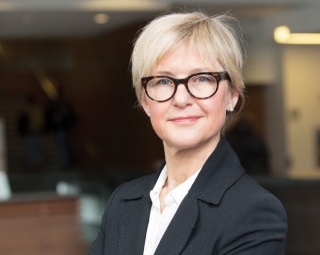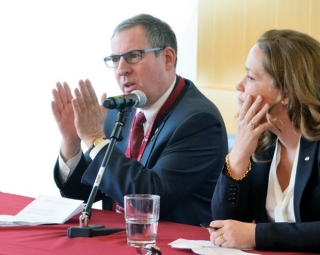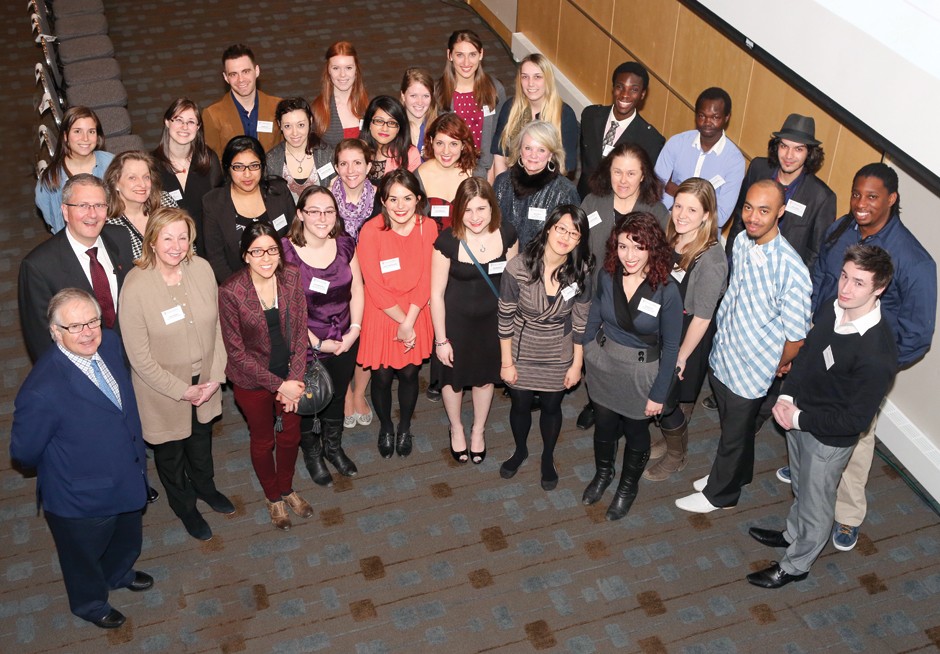Social media facilitates reaching out to new people. Yet those individuals who, for instance, click ‘Like’ on a Facebook page must additionally be enticed to visit a website where they can be encouraged to make a small donation through CanadaHelps.org or PayPal, or to agree to provide an email or civic address to be contacted directly.
“Once people have taken an active step in showing interest in a cause, there’s opportunity to regularly communicate how that organization is meeting an individual’s philanthropic vision,” Lynch says. “Then occasionally that person could be asked to consider making a donation.”
And once people make a donation — even a small one — they are more likely to contribute again.
When it comes to younger generations, the messaging on social media has to specifically resonate with individuals for them to participate in a fundraising event or to donate time or money. Take, for example, the way students at many universities across Canada have responded to the plight of homeless people. “They’re not only willing to donate money but to sleep outdoors on a cold night in March to raise awareness and obtain donations from other people,” Paulin says, referring to the 5 Days for the Homeless campaign, which at Concordia was initiated by Josh Redler, BComm 08, in 2008.
Snail mail is still the most effective means of solicitation, with three quarters of donors indicating they initially responded to a letter. Yet email campaigns are on the upswing, with one quarter to a third of recipients being responsive, according to Lynch.
However, the rules of engagement are definitely changing with the younger generations, especially with the increase of online giving and access to information. “Millennials are very savvy these days when it comes to greenwashing by corporations, or companies adopting a charitable symbol but donating relatively very little to that cause,” Paulin explains. “They have constant access to online experts, so when an organization is not being genuine and transparent, word spreads quickly through their social networks.”
The research by Paulin and her students indicates that, despite their reputation to the contrary, millennials are ready to give money, time and other resources when a cause rings true and can make a social or environmental improvement. “However, millennials can’t all be thrown into the same large interest group to the extent that perhaps previous generations were,” Paulin adds. “They have very distinct and varied interests that extend to differences in social and environmental causes as well.”
Giving is a question of finding and pushing the right button, according to Richard J. Renaud, BComm 69. “I’ll have people tell me they’re not in a position to donate, but then I call them up a week later to invite them to a charity golf tournament costing $1,000 for a foursome and they immediately sign up because they love to golf,” says Renaud, who is co-chair of Dundee Sarea LP.
Over many years Renaud has both fundraised on behalf of Concordia and donated generously to the university and to other organizations and institutions. “Making that personal connection with individuals to find out their exact interests is so important to aligning their generosity with specific fundraising campaigns and events,” he says.
His own multiple contributions to Concordia include the Carolyn and Richard J. Renaud Endowment and Adopt-a-Student campaign, and his work as past chair and director of the Concordia Foundation. The Richard J. Renaud Science Complex opened in 2003 and was named as a tribute to his efforts to revitalize the Loyola Campus.
“Father David Fitzpatrick of the St. Ignatius of Loyola Chapel would always say that we express our spirituality through giving,” Renaud recalls of his Loyola High School days. “The Jesuit motto of ‘a man for others’ has been engrained in me as I think it has been in a lot of past and upcoming Loyola graduates.”
He notes that social media and online technology have made administration of a greater number of smaller donations more feasible, especially in the current economic downturn. “Every bit really does help,” he says.
Renaud lauds Concordia’s Graduating Class Gift Fund, an initiative that asks graduating students to donate a minimum amount — $20.16 this year, with the aim of making that amount a monthly gift in perpetuity. “The program initiates the idea of these graduates donating as soon-to-be alumni,” he says. “It gets them into the habit at a time when they’re really aware of what their education at Concordia has afforded them.”
While millennials are looking to their future, many boomers are reassessing their lives and legacy. “Forty per cent of Canadians say they’re not being asked for a planned gift, with a lot of them adding that they would make one if approached,” Gomery said. “The conversation needs to take place and to start with asking boomers how much of their hard-earned but unused RRSP and RRIF savings they want to see go to government taxes rather than leaving a meaningful legacy.
“Boomers are radicalizing,” she added. “With more time on their hands and a sense of their own mortality, they’re looking at the kind of world they’re leaving to their children and they aren’t very pleased with it. So they’re becoming active in social movements, especially concerning social causes and the environment. It’s something that they’re coming to late in life and feel very passionate about.”
The role of women in gift-giving is also being more recognized and better understood. “Women have always played an active role in helping families to decide how to engage in philanthropy,” Gomery said. Fundraisers increasingly realize that if they don’t involve the women of the family when soliciting a gift, she added, “they won’t get very far.”
An increasing number of career women earning and spending their own income are becoming more interested in philanthropy on their own terms. “Again, however, you must be really genuine and transparent in what you do, because women seem to have a stronger intuitive sense when something is not quite right or seems to differ from the way it’s being presented,” Paulin says. “A discrepancy will steer them away very quickly.”
Paulin adds that the best strategy for any organization attempting to raise money these days is straightforward: “Promise less in terms of what you will accomplish with the donated funds but then fully deliver on that promise.”
—Julie Gedeon, BA 89, BA 01, MA 09, is a Montreal writer, editor and writing instructor/coach.


 Michèle Paulin, a professor in the Department of Marketing at Concordia’s John Molson School of Business, was one of the panellists at “The Secret of Giving: Why people donate — from boomers to millennials,” a panel discussion hosted by Concordia and the Council for Advancement and Support of Education in 2015.
Michèle Paulin, a professor in the Department of Marketing at Concordia’s John Molson School of Business, was one of the panellists at “The Secret of Giving: Why people donate — from boomers to millennials,” a panel discussion hosted by Concordia and the Council for Advancement and Support of Education in 2015.
 Howard Davidson, president and trustee of the r. Howard Webster foundation, and Elizabeth Gomery, co-founder of Philanthropica, spoke at “The secret of giving” panel discussion at Concordia.
Howard Davidson, president and trustee of the r. Howard Webster foundation, and Elizabeth Gomery, co-founder of Philanthropica, spoke at “The secret of giving” panel discussion at Concordia.
 Richard J. Renaud (bottom left) is pictured in 2013 with some of the many students who have benefited from his generosity. Renaud says his first gift to the university was a Christmas basket that he and his wife Carolyn (to his right) donated to a Loyola chapel drive soon after their marriage.
Richard J. Renaud (bottom left) is pictured in 2013 with some of the many students who have benefited from his generosity. Renaud says his first gift to the university was a Christmas basket that he and his wife Carolyn (to his right) donated to a Loyola chapel drive soon after their marriage.